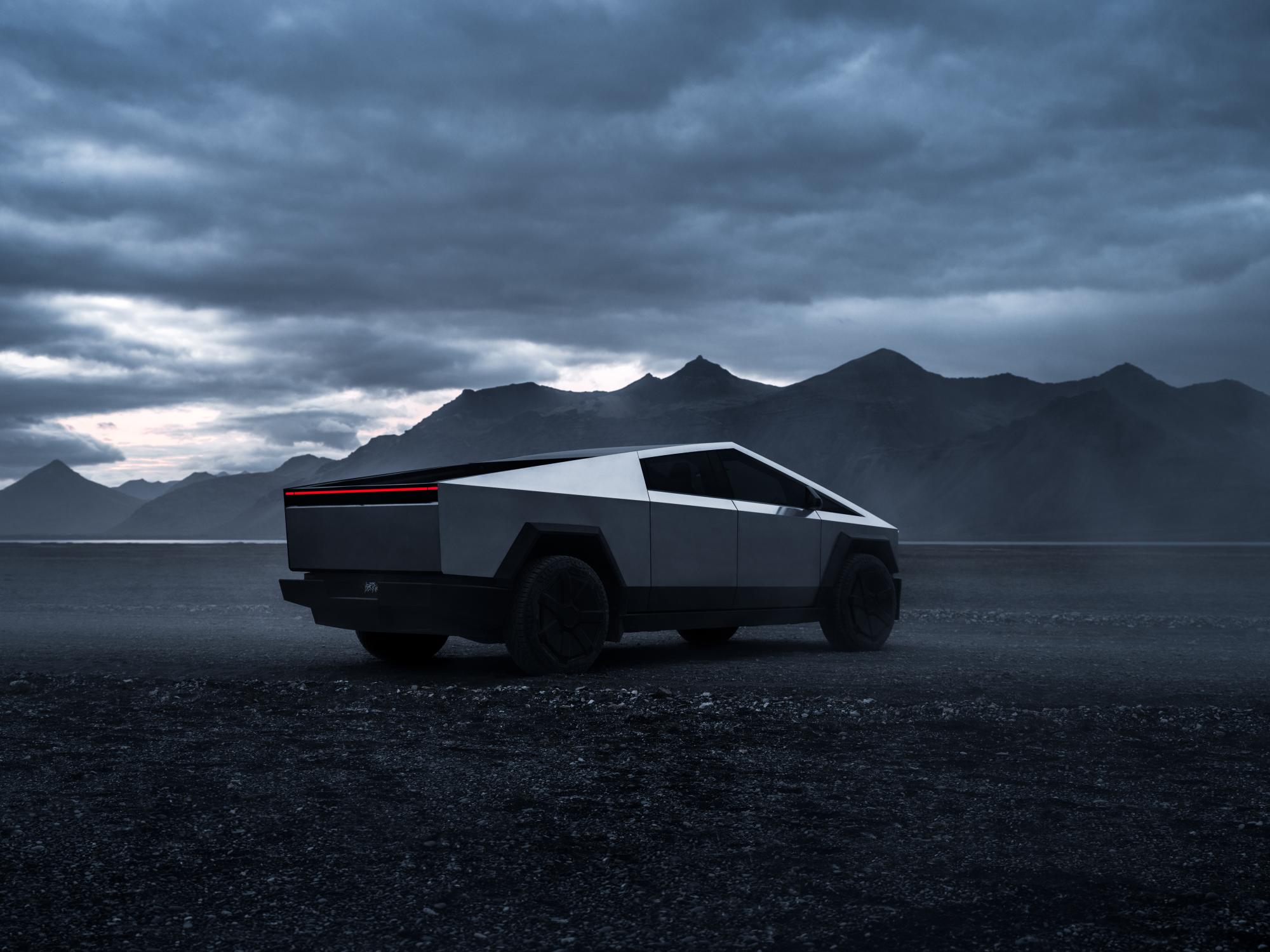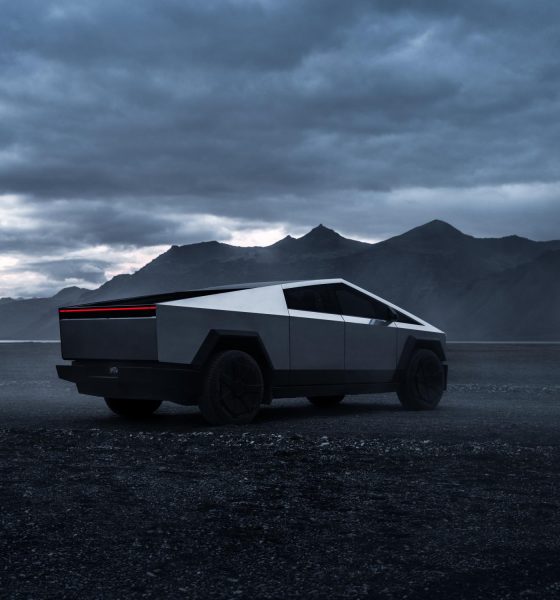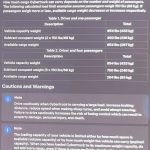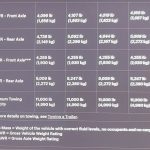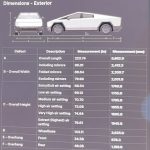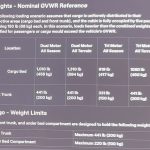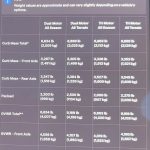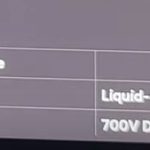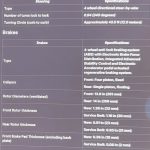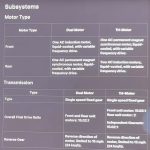The entire Tesla Cybertruck owner’s manual has been shared online, showing detailed specs and information about the newly released electric pickup.
While Tesla hasn’t shared the Cybertruck owner’s manual as of yet, a handful of early deliveries have been going out in the past several weeks. As part of one ongoing series of Cybertruck coverage, T Sportline shared a video depicting the entire owner’s manual for Tesla’s newest electric vehicle (EV) last week, offering a detailed look into the truck.
The channel calls the 38-minute YouTube coverage the “world’s most boring video,” simply due to its tedious nature as it features a slow scroll through the entire manual. The video is hosted by Brian, who adds in a brief introduction that this is what the Cybertruck’s manual looks like running software version 2023.44.9.
Tesla also began non-employee Cybertruck deliveries last week, after initial units had been trickling out to some celebrities and employees since its delivery event in November. The Cybertruck has also made a number of public appearances, and while many have shared peeks at the EV’s user interface (UI), this video features the owner’s manual in its entirety.
You can see screenshots from the specifications section of the Cybertruck owner’s manual by clicking the thumbnails below. Beneath that, you’ll find the full table of contents for the manual with timestamped links, and lastly, the video in full featuring a scroll through of the entire thing from T Sportline.
Tesla Cybertruck specifications as detailed in owner’s manual
Tesla Cybertruck owner’s manual table of contents
- Cybertruck Owner’s Manual (0:57)
- Using This Owner’s Manual
- Overview (1:39)
- Exterior
- Interior Overview
- Touchscreen
- Vehicle Status
- Interior Electronics
- Cargo Bed Outlets
- Voice Commands
- Cameras
- Opening and Closing (4:57)
- Keys
- Doors
- Windows
- Seating and Safety Constraints (6:02)
- Front and Rear Seats
- Seat Belts
- Child Safety Seats
- Airbags
- Storage Areas (8:49)
- Interior Storage
- Powered Frunk
- Cargo Bed
- Connectivity (9:57)
- Mobile App
- Wi-Fi
- Bluetooth
- Phone, Calendar, and Web Conferencing
- Driving (11:02)
- Starting and Powering Off
- Shifting
- Steering Wheel
- Mirrors
- Lights
- Windshield Wiper and Washers
- Braking and Stopping
- Traction Control
- Ride & Handling
- On-Road Modes
- Off-Road Modes
- Driver Profiles
- Trip Information
- Pedestrian Warning System
- Towing (15:03)
- Towing a Trailer
- Carrying Accessories and Crossbars
- Autopilot (16:17)
- About Autopilot
- Autopilot Features
- Limitations and Warnings
- Active Safety Features (17:11)
- Lane Assist
- Collision Avoidance Assist
- Speed Assist
- Dashcam, Sentry, and Security (18:10)
- Safety & Security Settings
- Dashcam
- Sentry Mode
- USB Drive Requirements for Recording Videos
- Climate (18:56)
- Operating Climate Controls
- Cold Weather Best Practices
- Adjusting the Front and Rear Vents
- Hot Weather Best Practices
- Navigation and Entertainment (19:53)
- Maps and Navigation
- Media
- Theater, Arcade, and Toybox
- Charging and Energy Consumption (21:22)
- Electric Vehicle Components
- High Voltage Battery Information
- Charging Instructions
- Getting Maximum Range
- Maintenance (22:38)
- Software Updates
- Maintenance Service Intervals
- Cleaning
- Tire Pressures
- Inspecting and Maintaining Tires
- Wheel and Tire Specifications
- Windshield Wiper Blade, Jets and Fluid
- Jacking and Lifting
- Parts and Accessories
- Do It Yourself Maintenance
- Specifications (26:27)
- Identification Labels
- Vehicle Loading
- Dimensions, Weights, and Cargo Capacity
- Subsystems
- Roadside Assistance (27:38)
- Instructions for Transporters
- In Case of Emergency (28:13)
- Contacting Tesla Roadside Assistance
- Running Out of Range
- Opening the Powered Frunk with No Power
- Jump Starting
- Opening Doors with No Power
- Troubleshooting (29:08)
- Troubleshooting Alerts
- Consumer Information (34:25)
- About this Owner Information
- Feature Availability Statement
- Disclaimers
- Reporting Safety Defects
- Certifications of Conformity
- Mobile Connector (35:19)
- Gen 1
- Gen 2
- Tesla Powershare Mobile Connector
Watch the full video detailing the full Tesla Cybertruck owner’s manual below, as shared last week on YouTube by T Sportline.
What are your thoughts? Let me know at zach@teslarati.com, find me on X at @zacharyvisconti, or send your tips to us at tips@teslarati.com.

Elon Musk
Elon Musk and Tesla AI Director share insights after empty driver seat Robotaxi rides
The executives’ unoccupied tests hint at the rapid progress of Tesla’s unsupervised Robotaxi efforts.

Tesla CEO Elon Musk and AI Director Ashok Elluswamy celebrated Christmas Eve by sharing personal experiences with Robotaxi vehicles that had no safety monitor or occupant in the driver’s seat. Musk described the system’s “perfect driving” around Austin, while Elluswamy posted video from the back seat, calling it “an amazing experience.”
The executives’ unoccupied tests hint at the rapid progress of Tesla’s unsupervised Robotaxi efforts.
Elon and Ashok’s firsthand Robotaxi insights
Prior to Musk and the Tesla AI Director’s posts, sightings of unmanned Teslas navigating public roads were widely shared on social media. One such vehicle was spotted in Austin, Texas, which Elon Musk acknowleged by stating that “Testing is underway with no occupants in the car.”
Based on his Christmas Eve post, Musk seemed to have tested an unmanned Tesla himself. “A Tesla with no safety monitor in the car and me sitting in the passenger seat took me all around Austin on Sunday with perfect driving,” Musk wrote in his post.
Elluswamy responded with a 2-minute video showing himself in the rear of an unmanned Tesla. The video featured the vehicle’s empty front seats, as well as its smooth handling through real-world traffic. He captioned his video with the words, “It’s an amazing experience!”
Towards Unsupervised operations
During an xAI Hackathon earlier this month, Elon Musk mentioned that Tesla owed be removing Safety Monitors from its Robotaxis in Austin in just three weeks. “Unsupervised is pretty much solved at this point. So there will be Tesla Robotaxis operating in Austin with no one in them. Not even anyone in the passenger seat in about three weeks,” he said. Musk echoed similar estimates at the 2025 Annual Shareholder Meeting and the Q3 2025 earnings call.
Considering the insights that were posted Musk and Elluswamy, it does appear that Tesla is working hard towards operating its Robotaxis with no safety monitors. This is quite impressive considering that the service was launched just earlier this year.
Elon Musk
Starlink passes 9 million active customers just weeks after hitting 8 million
The milestone highlights the accelerating growth of Starlink, which has now been adding over 20,000 new users per day.

SpaceX’s Starlink satellite internet service has continued its rapid global expansion, surpassing 9 million active customers just weeks after crossing the 8 million mark.
The milestone highlights the accelerating growth of Starlink, which has now been adding over 20,000 new users per day.
9 million customers
In a post on X, SpaceX stated that Starlink now serves over 9 million active users across 155 countries, territories, and markets. The company reached 8 million customers in early November, meaning it added roughly 1 million subscribers in under seven weeks, or about 21,275 new users on average per day.
“Starlink is connecting more than 9M active customers with high-speed internet across 155 countries, territories, and many other markets,” Starlink wrote in a post on its official X account. SpaceX President Gwynne Shotwell also celebrated the milestone on X. “A huge thank you to all of our customers and congrats to the Starlink team for such an incredible product,” she wrote.
That growth rate reflects both rising demand for broadband in underserved regions and Starlink’s expanding satellite constellation, which now includes more than 9,000 low-Earth-orbit satellites designed to deliver high-speed, low-latency internet worldwide.
Starlink’s momentum
Starlink’s momentum has been building up. SpaceX reported 4.6 million Starlink customers in December 2024, followed by 7 million by August 2025, and 8 million customers in November. Independent data also suggests Starlink usage is rising sharply, with Cloudflare reporting that global web traffic from Starlink users more than doubled in 2025, as noted in an Insider report.
Starlink’s momentum is increasingly tied to SpaceX’s broader financial outlook. Elon Musk has said the satellite network is “by far” the company’s largest revenue driver, and reports suggest SpaceX may be positioning itself for an initial public offering as soon as next year, with valuations estimated as high as $1.5 trillion. Musk has also suggested in the past that Starlink could have its own IPO in the future.
News
NVIDIA Director of Robotics: Tesla FSD v14 is the first AI to pass the “Physical Turing Test”
After testing FSD v14, Fan stated that his experience with FSD felt magical at first, but it soon started to feel like a routine.

NVIDIA Director of Robotics Jim Fan has praised Tesla’s Full Self-Driving (Supervised) v14 as the first AI to pass what he described as a “Physical Turing Test.”
After testing FSD v14, Fan stated that his experience with FSD felt magical at first, but it soon started to feel like a routine. And just like smartphones today, removing it now would “actively hurt.”
Jim Fan’s hands-on FSD v14 impressions
Fan, a leading researcher in embodied AI who is currently solving Physical AI at NVIDIA and spearheading the company’s Project GR00T initiative, noted that he actually was late to the Tesla game. He was, however, one of the first to try out FSD v14.
“I was very late to own a Tesla but among the earliest to try out FSD v14. It’s perhaps the first time I experience an AI that passes the Physical Turing Test: after a long day at work, you press a button, lay back, and couldn’t tell if a neural net or a human drove you home,” Fan wrote in a post on X.
Fan added: “Despite knowing exactly how robot learning works, I still find it magical watching the steering wheel turn by itself. First it feels surreal, next it becomes routine. Then, like the smartphone, taking it away actively hurts. This is how humanity gets rewired and glued to god-like technologies.”
The Physical Turing Test
The original Turing Test was conceived by Alan Turing in 1950, and it was aimed at determining if a machine could exhibit behavior that is equivalent to or indistinguishable from a human. By focusing on text-based conversations, the original Turing Test set a high bar for natural language processing and machine learning.
This test has been passed by today’s large language models. However, the capability to converse in a humanlike manner is a completely different challenge from performing real-world problem-solving or physical interactions. Thus, Fan introduced the Physical Turing Test, which challenges AI systems to demonstrate intelligence through physical actions.
Based on Fan’s comments, Tesla has demonstrated these intelligent physical actions with FSD v14. Elon Musk agreed with the NVIDIA executive, stating in a post on X that with FSD v14, “you can sense the sentience maturing.” Musk also praised Tesla AI, calling it the best “real-world AI” today.
